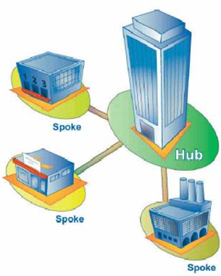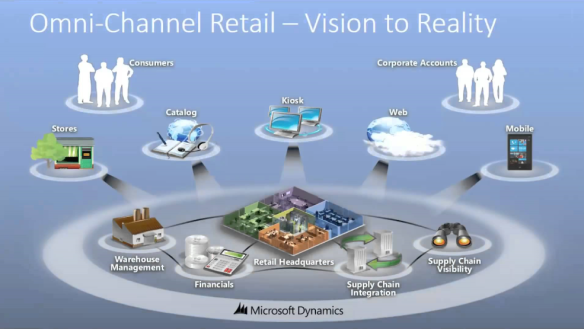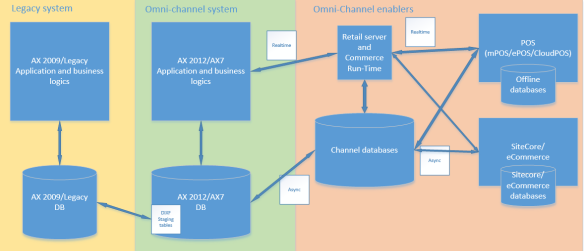
|
|
#1 |
|
Участник
|
kurthatlevik: AX7/AX 2012 Retail Omni-channel Hub-and-Spoke Architecture
Источник: https://kurthatlevik.wordpress.com/2...-architecture/
============== The simplest definition of “hub and spoke” is that it is a model for integrating the ERP system used at a company’s headquarters with the systems used by its subsidiaries and branch offices. This blogpost discusses approaches on how to benefit from the fast innovation cycle that Dynamics AX have, without starting a new big-bang ERP implementation project.  Implementing any ERP system is a huge investment. It is not uncommon that thousands of hours is required before you can start to see the benefits. The cost of performing a large scale upgrade simply cannot be justified. It is therefore common to see companies implementing Dynamics AX, and then waits a few years before they take the effort to upgrade to newer releases. In my experience I see that it is most common to jump over a major release. The innovation cycle that we see with Dynamics AX, new ground breaking technology is being released every year. Much of this new innovation is directly related to new possibilities in having true Omni-channels. The Dynamics AX Retail solution became mature in release AX 2012 R3. But there is a lot of companies still using AX 2009, any they have a well working systems for financials, procurement, supply chain and order management. They don’t want to upgrade, but they are still missing the ability to benefit from becoming a true Omni-channel retailer. The challenge is that the competition will be stronger and more mature.  I have met several customers that are implementing AX 2012/AX7 only for the Omni-channel, while keeping their AX 2009/legacy system taking care of the traditional ERP-processes. This approach focuses on limiting the implementation scope to only cover the Omni-Channel Retail vision. The idea is to only use AX 2012 on the retail channels. This means that retail stores, WEB, retail hierarchies, call-center is features that the AX 2012 (green) is covering. Then an integration between the legacy system (AX 2009) and AX 2012 is done using DIXF, that seamlessly connects the systems.  What I like about the Dynamics AX retail, is that what we currently have in AX 2012 is a very stable and is built for supporting a much faster implementation cycle. This means we can faster take advantage of new technologies. The AX for retail support the N-1 approach. This means that we can upgrade the AX 2012 parts to AX7, without making changes to the POS or the e-commerce systems. We can also in a timely fashion roll-out updated version to new channels, without being concerned of disrupting the existing channels. I can share a personal experience with this approach. A customer came to us that had Dynamics NAV as their legacy system, and wanted to roll-out Dynamics AX POS to several countries. From the time we did the kick-off, and until the first store was up and running it took only 8 hardworking weeks. We used the Hub-and-Spoke approach, and it shows that it is a quick and achievable way to get return-on-investment fast. So my advice is; Start your Omni-Channel journey today. Don’t wait until you have upgraded your legacy systems, because you can do that later. Happy DAX’ing friends, and thanks for reading my blogposts! Источник: https://kurthatlevik.wordpress.com/2...-architecture/
__________________
Расскажите о новых и интересных блогах по Microsoft Dynamics, напишите личное сообщение администратору. |
|
|